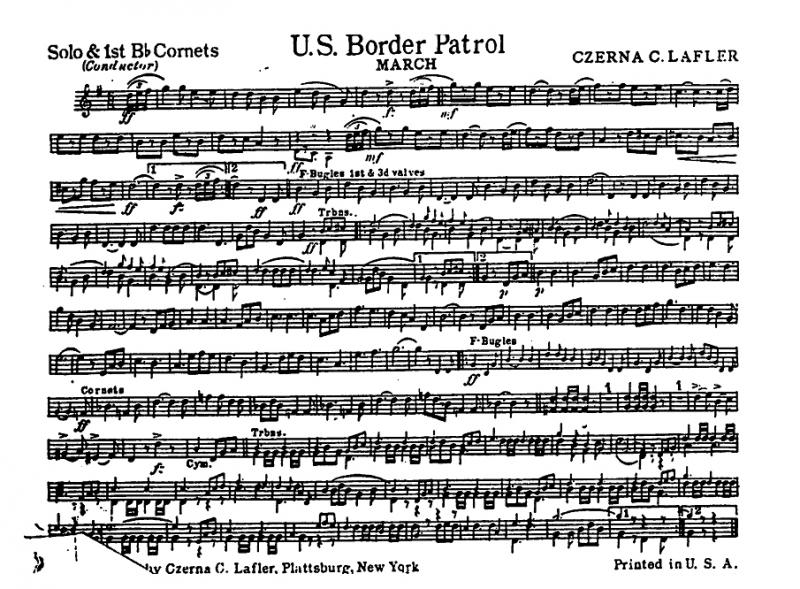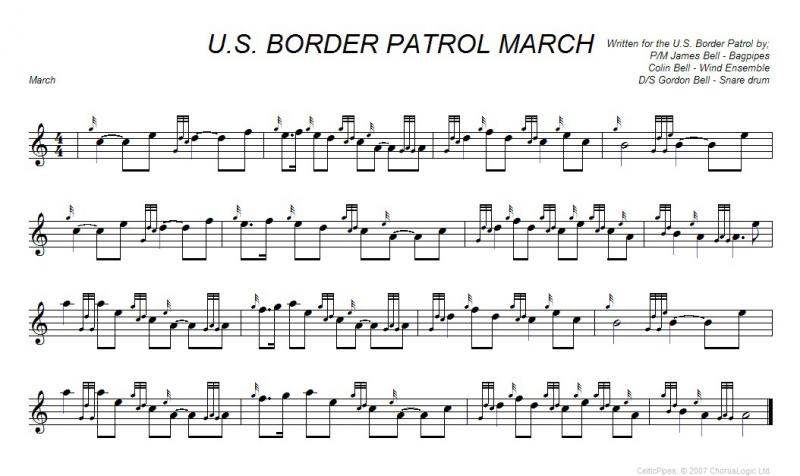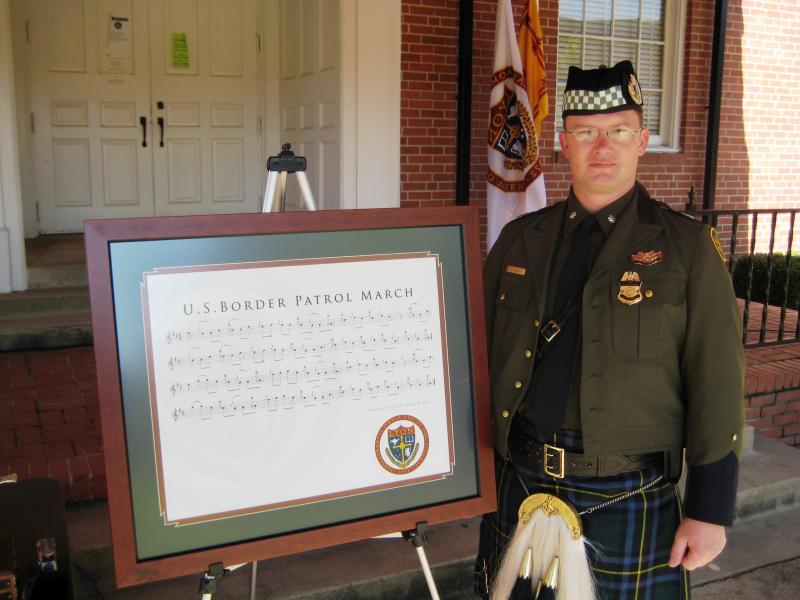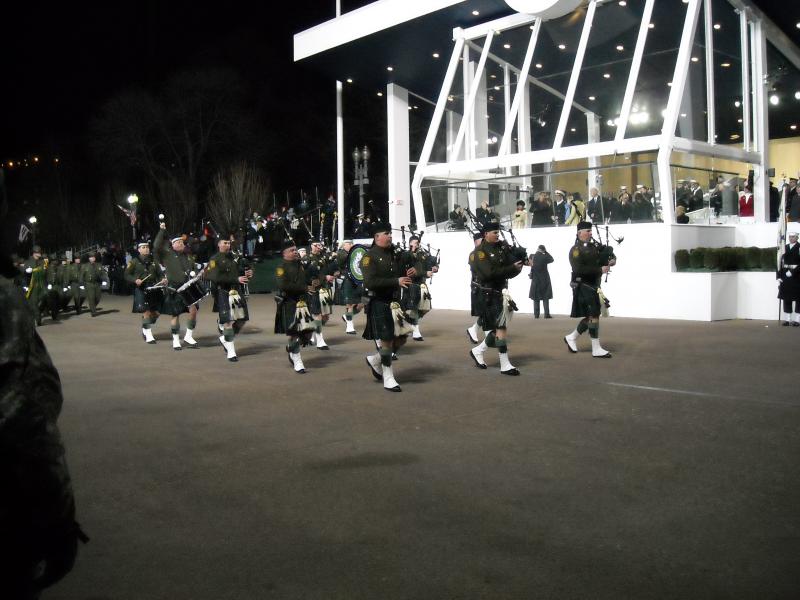
Czerna C. Lafler, 1937.
The Border Patrol March, a ceremonial musical piece nearly as old as the U.S. Border Patrol itself, was composed and arranged by two U.S. Army Officers in Plattsburgh, N.Y. The duo, George Friedrick Briegel (1890-1968) and Czerna Carl Lafler (1891-1973), were prolific composers of musical marches throughout both World Wars.
As a teenager, George Briegel was a violin soloist and trombonist with the U.S. Military Academy Band at West Point. While Briegel would serve many bands, including the 22nd New York Regiment Band, the 102nd Engineer Regiment Band, the Pelham Bay Navy Band and the New York Fire Department Band, among many others, his musical accomplishments were just as far reaching. Briegel began publishing his own compositions and arrangements in 1910 under the name Triangle Music in New York City, a business he operated until his death. His many works include the Army Engineer March, Fire Department Legionnaires March, Irish Parade March, Irish Regiment March, Men O' the Navy March, and the Silent Legion Funeral March.

sheet music
Cznera Lafler, a Kansas native, enlisted in the U.S. Army at the age of 21 on February 1, 1913. He would rise to the rank of Captain, retiring on August 30, 1945, to Los Angeles, California. While in the service, Lafler served as Bandmaster of the 26th Regiment, 1st Infantry Division. It was during his time as Bandmaster in Plattsburgh that Lafler was said to have been commissioned to compose the march by Senior Patrol Inspector John "Jack" C. Allenton of Rouses Point, New York.

Commander of the USBP P&D, accepts a
framed copy of the Border Patrol March,
a gift of Gordon, James and Colin Bell of
the Balmoral School of Piping and
Drumming. It is currently on display at
CBP Headquarters in the Office of Border
Patrol. Photo April 2008.
It is unclear how Lafler and Briegel came to collaborate on the Border Patrol March. Though this information has yet to come to light, copyright records reveal five collaborations between the two officers. These include the Colonel Crystal March, Pearl of the Orient March, Philippine Constabulary Band March, 31st U.S. Infantry March, and the Border Patrol March. Lafler registered copyright of the Border Patrol March on February 24, 1937, and performed it the same year with the Clearfield Junior Band of Pennsylvania, on December 26.

Inaugural Parade 2009. The USBP P&D
were joined by the Border Patrol Color
Guard, marching platoon, and Spokane
Sector's Project Noble Mustang Mounted
Unit - 19 wild horses that were adopted
through the U.S. Bureau of Land
Management's (BLM) Wild Horse and
Burro Program.
Nearly seventy years after its composition by Lafler and Briegel, The Border Patrol March was unknowingly refined. In 2008 the so-called Bell Clan, comprised of Gordon, James and Colin Bell of the Balmoral School of Piping and Drumming, presented a new musical march (independent of the original composition) as a surprise gift to the U.S. Border Patrol. It was played for an audience of nearly five thousand, including four attending members of the U.S. Border Patrol Pipes and Drums - a corps of agents skilled and trained in music for official ceremonies. A copy of the march was presented to the Border Patrol and is currently on display at CBP headquarters in the Office of Border Patrol, Washington, D.C.
The Border Patrol Pipes and Drums performed The U.S. Border Patrol March in the 2009 Inaugural Parade. The march has been played at all Border Patrol Academy graduations since the 129th session. It was most recently played at the graduation of the 1000th Session of the Border Patrol Academy, on April 13, 2012.
What about U.S. Customs and Border Protection history would you like to know? Contact us at CBPHistory@dhs.gov.


